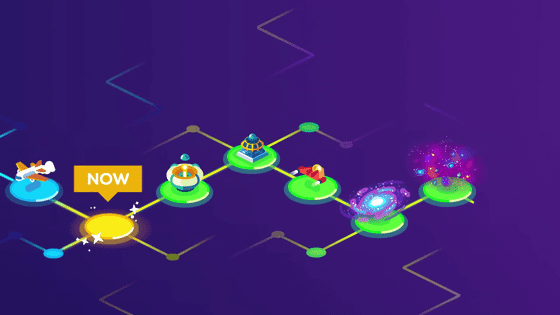What kind of future will humankind have if it does not self-destruct in a nuclear war?

Japan is approaching a
The Last Human – A Glimpse Into The Far Future --YouTube
With so many problems today, such as climate change and political conflicts, it's easy to think that the end of humankind is just around the corner.

However, looking back on history, humankind always believed that 'the world is about to end.'

Therefore, the theme of this movie is to think about 'what kind of future is waiting if the history of humankind is not over?'

To fortune-telling the future, you first need to know the past. Modern humans were born about 200,000 years ago.

They had the ability to live together in large groups beyond their families, something that no other animal had, but the food was scarce and the natural environment was harsh, so people were short-lived.

As a result, it took 150,000 years to reach a population of 2 million, or three-quarters of human history.

Human life is improving little by little, and after a turning point such as the

And the population of 1 billion has doubled in just 120 years, then doubled in the next 50 years, and today it is about 8 billion.

It is estimated that about 117 billion people have been born and about 109 billion have died so far. According to calculations, human beings living in modern times account for about 7% of the human beings born so far. This is the same number of people born and dead in the 150,000 years since the birth of mankind.

Living standards have improved more than ever and humans have lived longer, but at the same time fewer births. The United Nations estimates that the population will peak in 2100 and the number of births will reach 125 million annually.

To simulate what happens from there, Kurzgesagt has drawn three scenarios. The first is the case where humankind does not leave the earth.

The average 'species lifespan' of mammals is about 1 million years, and

If the history of mankind lasts for 1 million years, the time left is 800,000 years. If 125 million people are born every year until then, the number of human beings born in the future will be 100 trillion.

In other words, the human race that is alive now accounts for only 0.008% of the human race that will be born in the future.

A more prosperous future is possible. If the same 10 million years as the most successful mammals are the lifespan of humankind, the total number of human beings is 1200 trillion. Perhaps humanity could continue to live on Earth for 500 million years until the sun's life is near.

The second scenario is the case of entering the solar system.

Mankind has spent the past 200,000 years looking up at the moon, but has already successfully landed on the moon. Perhaps it could migrate to other planets in the solar system or build habitable colonies in outer space.

Even if we can no longer live on Earth, asteroids still have abundant water and other supplies, and the Sun will continue to supply energy for billions of years. As a result, we can build far more living bases and increase our population by orders of magnitude than we do with our destiny.

The fact that there are many people means that many scientists who invent medical technology, experts who tackle social problems, and developers who make interesting games are also active.

Perhaps humans may evolve into different species, or genetically engineered to intentionally evolve.

One of the benefits of advancing into the solar system is that there is an evacuation site. If one planet becomes uninhabitable, you can escape to another star or place of residence.

Therefore, human beings will continue to survive unless the entire solar system is destroyed, such as a supernova explosion or a gamma-ray burst.

The third scenario is to jump out of the solar system.

The solar system is vast, but it is just one of the billions of stars in the Milky Way galaxy. Suppose a future person colonizes 100 billion stars, where they live for 10 billion years, and each star gives birth to 101 million people each year ...

The human population will grow to a tremendous number.

You can increase this number as much as you like. The Milky Way Galaxy will eventually

Perhaps future humans have the technology to use the

In addition, it may spread the print to other galaxies.

Kurzgesagt concludes, 'We in our time are the most developed and incredible possibilities in human history to date. What we are about to do is still born. It's important for those who don't, because if we ruin the present, a tremendous number of people could lose the future. Thinking about it, think about the distant future. You will also understand how important it is to let them do it and how to spend the next day. '

Related Posts:
in Video, Posted by log1l_ks







